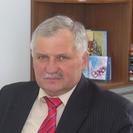
Баяндина Тамара Александровна.
Кандидат технических наук, Доцент.
Должность: Доцент Самарского университета.
Стоимость обучения на курсе составляет 3600 рублей. Более подробную информацию об обучении и порядке оплаты можно запросить по электроной почте: cdot@ssau.ru.
Within the framework of this course, the participants will gain fundamental knowledge in the field of rocket technology and jet propulsion theory. The basis of the course is the generally accepted scheme of dividing the rocket flight path into sections and the control program for each of them.
In the process of instruction the course participants are to learn about the rocket flight conditions at all stages of its motion (from launch to the moment of reaching the target orbit), as well as the forces and moments acting on the rocket in flight and mathematical models they are described by. Special attention in the course is paid to the choice of rocket design characteristics, ensuring the implementation of the target task.
After theoretical training, the participants will be asked to select the launch vehicle from the available prototypes, to specify its design parameters for solving the problem of rocket injection into the target orbit and to calculate the basic flight characteristics of the launch vehicle, including the control program for individual stages.
Module 1. What is a rocket? The principle of jet propulsion. Stages of development of missiles and rocket technology. Characteristics of launch vehicles. The structure of the launch vehicle.
Module 2. Fundamentals of jet propulsion theory. Meshchersky’s equation. Thrust force. Reaction acceleration. Tsiolkovsky’s formula. Assessment of rocket performance. The concept of characteristic velocity.
Module 3. Models of the Earth’s atmosphere and gravitational field. Mathematical model of the Earth’s atmosphere. Model of the Earth’s gravitational field.
Module 4. Forces acting on the launch vehicle.The main sections of the flight path. Forces acting on a launch vehicle in flight.
Module 5. Vector equations of launch vehicle motion.Coordinate systems. Vector equations of motion of the center of mass and relative to the center of mass. Coordinate systems. Mutual orientation of coordinate systems.
Module 6. Equations of launch vehicle motion on the axis of the flight path axis system. Conversion of general equations of motion on the axis of the flight path axis system. Equations of launch vehicle motion on the axis of the flight path axis system for a particular case.
Module 7. Ascent trajectories of launch vehicle stages. Motion of the first stage of the launch vehicle. Control program for the motion of the first stage of the launch vehicle. Motion of the second stage of the launch vehicle. Selection of the pitch program.
Module 8. Preparation of initial data for calculation of flight characteristics.Two-stage launch vehicles and spaceports. Choice of launch vehicle. Calculation of the required vehicle orbit injection velocity..
Module 9. Calculation of flight characteristics.Calculation of the launch vehicle flight path. Choice of nominal control laws. Determination of excess / shortage of second stage fuel.
Module 10. Final testing.
Mastering of the theoretical and practical part of the course requires knowledge of physics and mathematics at the secondary school level.
24.03.01 Rocket systems and cosmonautics
24.04.02 Motion control systems and navigation
24.05.01 Design, production and operation of rockets and rocket space complexes
3 зачётных единицы
The acquired knowledge will allow the participants:
As a result of mastering the course, the participants will have an idea about rocket and space technology, as well as know the basics of the theory of launch vehicle motion.

Кандидат технических наук, Доцент.
Должность: Доцент Самарского университета.

Кандидат технических наук, Доцент.
Должность: Доцент Самарского университета.

Кандидат технических наук.
Должность: Доцент кафедры космического машиностроения Самарского университета

Доктор технических наук, Профессор.
Должность: директор института ракетно-космической техники Самарского университета.